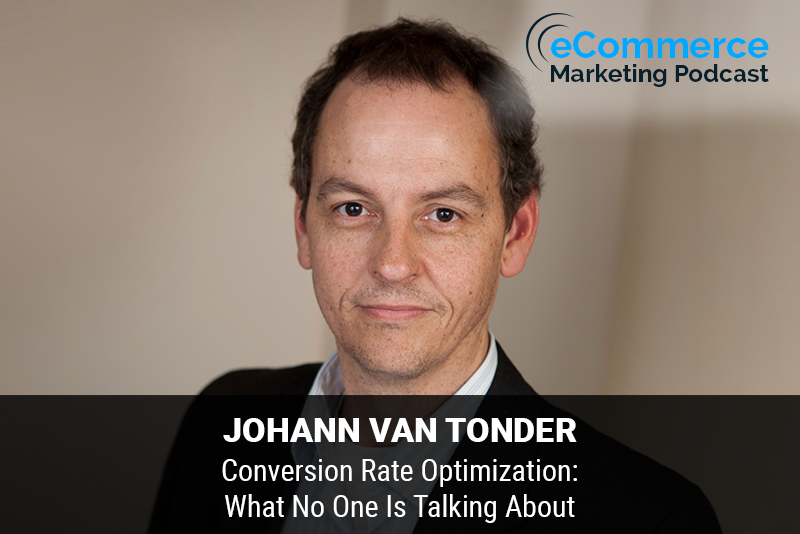
eCommerce Marketing Podcast
The eCommerce Marketing Podcast walks you through everything that goes into ecommerce marketing — from inbound marketing to paid advertising to conversions. Learn the strategies top marketing experts use to grow their businesses.
Conversion Rate Optimization: What No One is Talking About – with Johann Van Tonder
byArlen Robinson
Marketing Strategies and Topics Covered in this Episode:
- Where does an ecommerce brand begin when it comes to Conversion rate optimization?
- The specific methodology to follow when looking to improve your conversion rates
- Standard Do’s and Don’ts when it comes to CRO
- Ecommerce businesses that have been successful with conversion rate optimization and the specific things they did to improve conversions

In this episode of the Ecommerce Marketing Podcast, host Arlen Robinson interviews Johann Van Tonder, the Chief Operating Officer at AWA Digital and co-author of “E-commerce Website Optimization.” Johann has been running online controlled experiments like A/B tests for over 10 years and shares his insights on conversion rate optimization (CRO) for e-commerce businesses.
Key Takeaways:
- Introduction to Johann Van Tonder (00:00:15)
- Background in online controlled experiments and CRO.
- Co-author of “E-commerce Website Optimization.”
- The Importance of Understanding Customer Needs (00:04:45)
- Johann’s journey into CRO began with understanding customer needs.
- Early days of Google Analytics and the evolution of data-driven decision-making.
- Foundational Steps for CRO (00:07:30)
- The importance of stakeholder buy-in and understanding their needs.
- Building a strong foundation for CRO initiatives.
- Methodology for CRO (00:10:00)
- Looking at data to find actionable insights.
- Asking “what if” questions to develop hypotheses.
- Testing hypotheses and iterating based on results.
- Customer-Centric Approach (00:14:00)
- Viewing a website through the lens of a sales conversation.
- Understanding the customer’s needs and motivations.
- Avoiding Common Pitfalls (00:20:30)
- Don’t rely on gimmicks or copy competitors blindly.
- Focus on the number of tests rather than the win rate.
- Launch MVPs and validate hypotheses quickly.
- Practical Applications (00:24:00)
- Examples of successful companies following the CRO process.
- Emphasizing continuous testing and learning from results.
- Benefits of Testing (00:27:30)
- Testing helps avoid making costly mistakes.
- Faster implementation and higher ROI through validated ideas.
Bullet Points of Key Takeaways with Timestamps:
- [00:00:15] Introduction to Johann Van Tonder and his background.
- [00:04:45] Understanding customer needs and the evolution of Google Analytics.
- [00:07:30] Importance of stakeholder buy-in for CRO.
- [00:10:00] Methodology: Data analysis, hypothesis development, and testing.
- [00:14:00] Customer-centric approach and viewing websites as sales conversations.
- [00:20:30] Common pitfalls to avoid in CRO.
- [00:24:00] Practical examples of successful CRO applications.
- [00:27:30] Benefits of continuous testing and learning.
Guest Information:
Johann Van Tonder
- Chief Operating Officer at AWA Digital
- LinkedIn: Johann Van Tonder
- Website: AWA Digital











